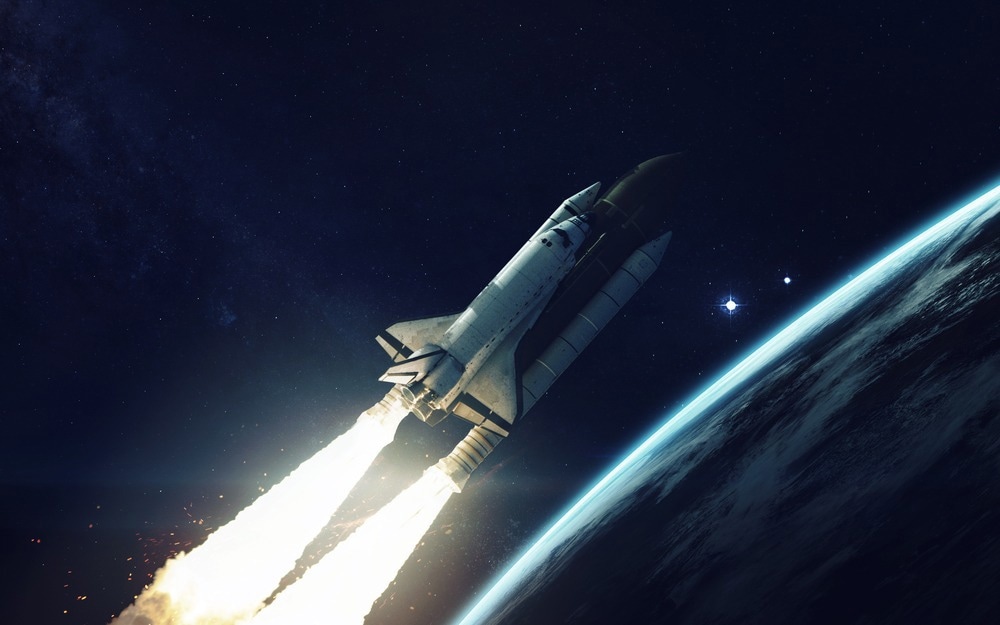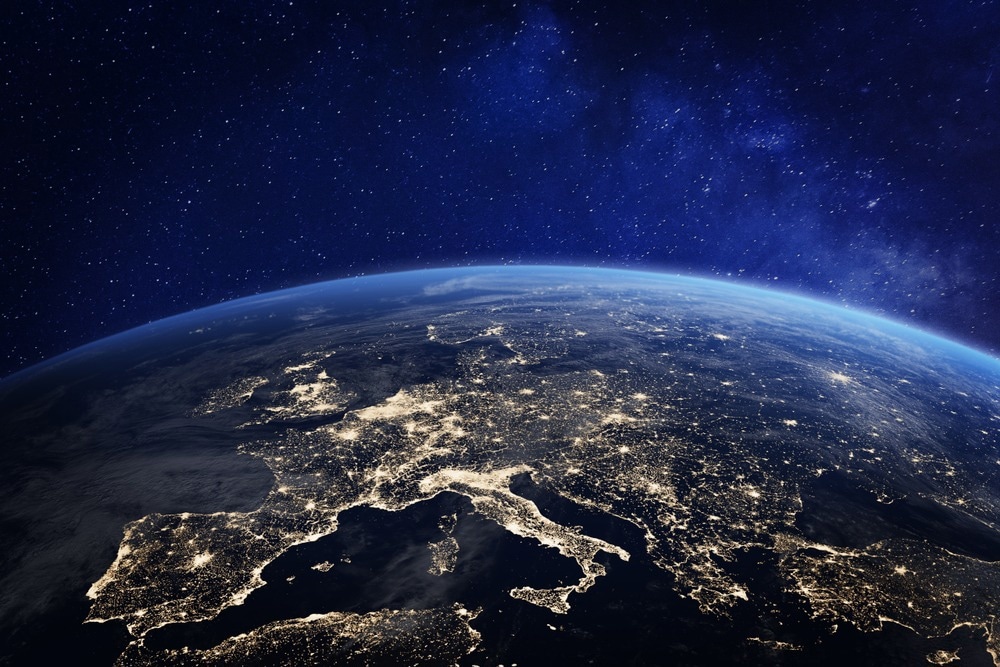As humanity prepares to return to the moon and venture further out into space, innovative robotic technologies will be needed to complement future space missions. These robots will provide a variety of critical functions in the new frontier of space exploration. Explore how aerospace robots will contribute to the future of humankind’s place in the cosmos in this article.

Image Credit: Vadim Sadovski/Shutterstock.com
Introduction to Aerospace Robots
Crewed missions to the moon ceased in the 1970s. Since then, astronauts have only ventured as far as Earth’s orbit. For a few decades, the question of how humanity could return to the Moon and venture further out into space was a complex one, which a number of observers and experts doubted was possible.
Since the last crewed mission to the lunar surface in 1972, semi-autonomous robots and remote-controlled vehicles such as landers, probes, orbiters, and rovers have taken over from their human counterparts. 1
Robots offer several benefits for space missions, such as improved safety and cost efficiency. Their use comes at a fraction of both risk and cost and they can withstand the harsh conditions of outer space much better than astronauts. Because of this, it is highly probable that the role of robots in space is set to expand significantly over the coming years.
Roles and Functions of Aerospace Robots
Aerospace robots can play a variety of key roles in space missions, such as logistical support, data collection, exploring the lunar terrain, constructing critical infrastructure and manufacturing equipment, deliver payloads, and even keeping humans in space company on long missions.1
The list of roles and functions aerospace robots can perform in space missions is rapidly growing, with several missions already announced by space agencies such as NASA and ESA for the next decade and beyond.
Exploration and Space Missions
Currently, there are a number of robotic missions tasked with exploring the Earth’s nearest celestial neighbors. Perseverance and Curiosity are rovers currently on Mars, providing crucial information about the Red Planet which could prove useful for future crewed missions to its surface.2
The Ingenuity Mars Helicopter has completed 72 missions totalling 128.8 flying minutes and covering 10.5 miles at a maximum altitude of 24.0 meters since 2021 on Mars. This small powered robotic craft is the first to successfully undertake controlled, powered flight on another planet, further pushing back the boundaries of human ingenuity, paving the way for future robotic and crewed missions.
CADRE is another project from NASA’s Jet Propulsion Laboratory. Three shoebox-sized robotic robots, equipped with sensors and communicating via radio signals, will be launched this year, spending a full lunar day (about 14 Earth days) creating a 3D topographical map of the moon’s Reiner Gamma region.1
Satellite Deployment and Maintenance
Robots are revolutionizing satellite deployment and maintenance. Typically, satellite deployment is complex and resource-intensive, while maintenance is highly difficult and expensive as it requires astronauts to carry out repairs.
On-orbit servicing can be improved by employing robotic arms and specialized spacecraft, allowing satellites to be serviced, repaired, and upgraded, improving their useable lifespan. Cobots can streamline and revolutionize processes. Additionally, drones and semi-autonomous systems at launch sites can benefit initial deployment stages.3
OSAM-1 is a robotic satellite maintenance spacecraft scheduled for launch in 2026. It is designed to rehabilitate old satellites, vastly improving NASA’s capabilities in the field of on-orbit servicing.1
Assembly and Construction in Space
Traditionally, payloads and vehicles are manufactured on Earth and launched into space atop rockets, which is incredibly costly and resource-intensive. Using robots in space would significantly reduce these costs and resources.
Valkyrie, in development since 2013, is a robot that NASA foresees being used to assemble equipment ahead of a crew’s arrival as well as handling maintenance tasks.1 It could play a key role in future Artemis missions, building compounds where astronauts could live long-term.

Image Credit: Vadim Sadovski/Shutterstock.com
Surveillance and Monitoring
Robots will continue to play an evolving role in surveillance and monitoring in the aerospace industry, not just in space but also in manufacturing plants for both space vehicles and airplanes. Drones are especially useful for this task as they can operate semi-autonomously, covering large areas and providing real-time monitoring, security, and surveillance capabilities.4
Remote Sensing and Data Collection
Remote sensing and data collection are two other areas where aerospace robots excel. Valkyrie, for example, uses cameras and sensor technologies, including LiDAR, to navigate difficult terrain and perform critical tasks.1
Equipping aerospace robots with Industry 4.0 technologies such as AI, algorithms, smart sensors, neural networks, and deep- and machine learning capabilities improve their data collection capabilities, allowing them to perform a multitude of mission-critical tasks whilst feeding data back for analysis and improving future missions to orbit and beyond.
Future Applications and Innovations
The field of aerospace robotics is pushing back the boundaries of human ingenuity and bringing the much-sought-after future of space exploration closer to fruition. At the forefront of this field is innovation in multiple areas of Industry 4.0 technology, such as automation, AI, machine learning, computer vision, and sensors, to name but a few.
Beyond the applications mentioned above, several exciting areas of research have emerged in recent years, which could see robots helping to answer some of the most fundamental questions of the human experience and science, as well as pushing the boundaries of technology back even further.
One future innovation in the field of aerospace robotics is the search for life on other celestial bodies in the solar system. EELS (exobiology extant life surveyor) is a project that seeks to discover whether there is life on Enceladus, a moon of Saturn.
EELS, a bionic serpent-like robot, will explore the subsurface ocean of the moon by entering narrow vents in its surface, autonomously exploring, searching and mapping the underground ocean and other environments and searching for any life that may exist, be it micro- or macroscopic.1
Another key problem robots could be used to solve is space junk. Since the beginning of the space race, thousands of vehicles have been launched, leaving behind an accumulating amount of debris, and endangering current and future space missions. ClearSpace-1 is a robotic mission scheduled for launch in 2025 which aims to remove space debris.
Finally, another innovation in development is MIRA, a handheld surgical robot that, if its initial mission aboard the ISS is successful, will be used to perform operations onboard future space missions.1
Commercial Drones: The Challenges Facing the Aerospace Industry
References and Further Reading
- Becher, B. (2023) Why We Send Robots to Space (and 7 Examples) [online] builtin.com. Available at: https://builtin.com/hardware/space-robots
- NASA (website) Mars 2020 [online] nasa.gov. Available at: https://mars.nasa.gov/mars2020/
- TM Robot (website) Robotic Arms in Manufacturing: How Cobots are Revolutionizing Material Handling [online] tm-robot.com. Available at: https://www2.tm-robot.com/en/robotic-arms-in-manufacturing-how-cobots-are-revolutionizing-material-handling/
- Proponent (2018) The Future of Drones in the Aerospace Industry [online] proponent.com. Available at: https://www.proponent.com/news/future-of-drones-in-aerospace/
Disclaimer: The views expressed here are those of the author expressed in their private capacity and do not necessarily represent the views of AZoM.com Limited T/A AZoNetwork the owner and operator of this website. This disclaimer forms part of the Terms and conditions of use of this website.